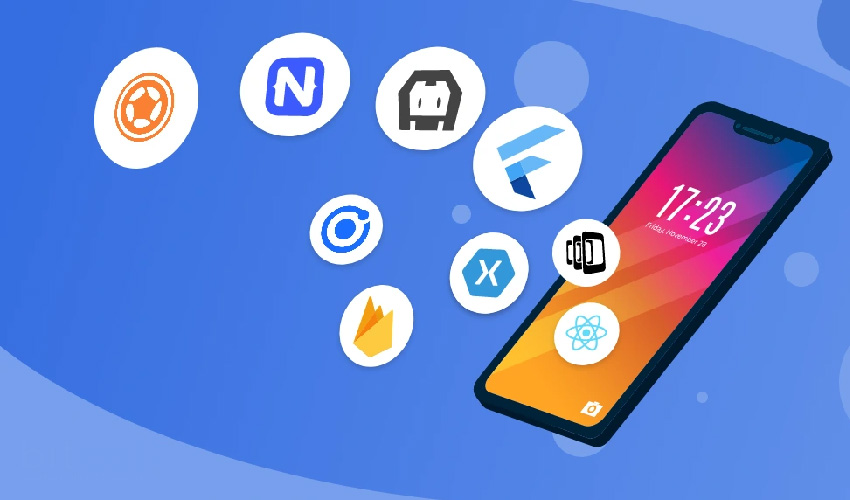Table of Contents
Understanding Mobile App Development Frameworks
Mobile app development frameworks are the backbone of app development. They provide a structure that simplifies the development process, making it faster and more efficient. A well-chosen framework can help you save time, resources, and ensure a smoother development experience.
Types of Mobile App Development Frameworks

When it comes to mobile app development frameworks, there are three primary categories to consider: native, cross-platform, and hybrid.
Native App Development
Native app development involves creating apps specifically for one platform, such as iOS or Android. This approach offers the best performance and access to platform-specific features. However, it can be more time-consuming and expensive, as you’ll need to create separate codebases for each platform.
Cross-Platform App Development
Cross-platform development allows you to build apps that can run on multiple platforms using a single codebase. Popular cross-platform frameworks include React Native and Flutter. This approach can save time and resources but may come with some limitations in terms of performance and access to platform-specific features.
Hybrid App Development
Hybrid apps combine elements of both native and cross-platform development. They use web technologies but are wrapped in a native shell. This approach aims to balance performance and development efficiency but may not provide the same level of performance as purely native development.
Factors to Consider
When choosing a mobile app development framework, several factors come into play. It’s essential to evaluate these aspects to make an informed decision.
Cost Considerations
Consider your budget and how much you’re willing to invest in development. Native development can be more expensive due to the need for separate codebases, while cross-platform and hybrid options are often more cost-effective.
Development Speed
If speed is crucial, cross-platform and hybrid frameworks may be more suitable, as they allow faster development using a single codebase.
User Experience (UX)
Think about the user experience you want to deliver. Some frameworks may provide a more consistent UX, while others might allow for more customization.
Popular Mobile App Development Frameworks
Let’s take a closer look at some popular mobile app development frameworks.

React Native: This framework is known for its efficiency in building apps that run on both iOS and Android. It has a strong community and is used by Facebook, Instagram, and Airbnb, among others.
Flutter: Developed by Google, Flutter is another cross-platform framework that offers a rich set of pre-designed widgets and delivers a native-like experience.
PhoneGap: If you’re considering hybrid development, PhoneGap, also known as Apache Cordova, is an open-source framework that allows you to build apps using HTML, CSS, and JavaScript.
Case Studies
To better understand the impact of framework choice, let’s explore some case studies:
Instagram: Instagram initially developed its app for iOS using native development. Later, they rebuilt it using React Native, allowing them to maintain a single codebase for both iOS and Android, resulting in significant development time and cost savings.
Alibaba: Alibaba, one of the world’s largest e-commerce companies, used Flutter to build its Xianyu app, providing a seamless experience for both iOS and Android users.
Community and Support

Choosing a framework with an active community and strong developer support is crucial. A vibrant community can offer solutions to problems, provide updates, and offer a vast resource pool.
Scalability and Future-Proofing
Ensure your chosen framework can scale with your app’s growth and adapt to future changes in the mobile industry. Future-proofing your app means it will remain relevant as technology evolves.
Conclusion
Selecting the right mobile app development framework is a pivotal decision that can impact the success of your mobile app. By considering factors such as cost, development speed, user experience, and support, you can make an informed choice that aligns with your app’s goals.
Thanks for reading our post “Outline for “How to Choose the Right Mobile App Development Framework”. Please connect with us to know more about How to Choose the Right Mobile App Development Framework.









